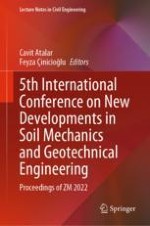2023 | OriginalPaper | Chapter
Estimation of Ground Motion at One of the Damaged Building Sites Following the October 30, 2020, Samos Earthquake
Authors : Doga Altunevlek, Gurkan Ozden
Published in: 5th International Conference on New Developments in Soil Mechanics and Geotechnical Engineering
Publisher: Springer International Publishing
Activate our intelligent search to find suitable subject content or patents.
Select sections of text to find matching patents with Artificial Intelligence. powered by
Select sections of text to find additional relevant content using AI-assisted search. powered by
